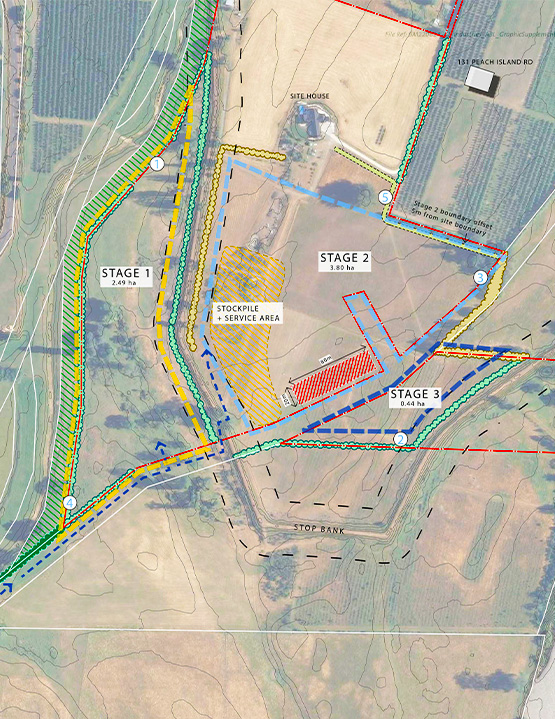Boffa Miskell was engaged to assess and mitigate landscape and visual effects. Our role included preparing expert evidence for Council and Environment Court hearings, developing a comprehensive landscape mitigation and restoration plan, and advising on conditions of consent. The work required careful consideration of amenity values, cultural concerns, and ecological restoration, culminating in a successful Environment Court decision.
The goal was to enable gravel extraction while maintaining rural character and enhancing ecological and amenity values. This was achieved through a staged excavation approach (maximum 1600m² open for gravel extraction at any time); shelterbelt and riparian planting using native species that support secondary overland flow paths of the Motueka River during flood events; stockpile screening via berms and vegetation; and restoration of an area within the site with native riparian species to provide amenity values from Motueka West Bank Road. Site management includes a landscape management plan, cultural monitoring, and iwi engagement. These measures ensure long-term landscape resilience and visual integration.
Key challenges included elevated residential views from neighbouring properties, cultural concerns from mana whenua, and visual effects from stockpiling and excavation. These were addressed by reversing excavation staging to allow upfront mitigation, reducing the active excavation area and limiting stockpile height, collaborating with iwi on species selection and cultural monitoring, and designing mitigation planting to screen views and enhance biodiversity.
Gravel extraction in areas with nearby properties requires careful consideration of amenity effects and mitigation. This initiative evolved through public submissions, iwi engagement, and hearings at both Council and Environment Court levels. The final consent reflects a balanced outcome, with landscape effects reduced to minor and long-term positive amenity and ecological benefits in parts of the site.
